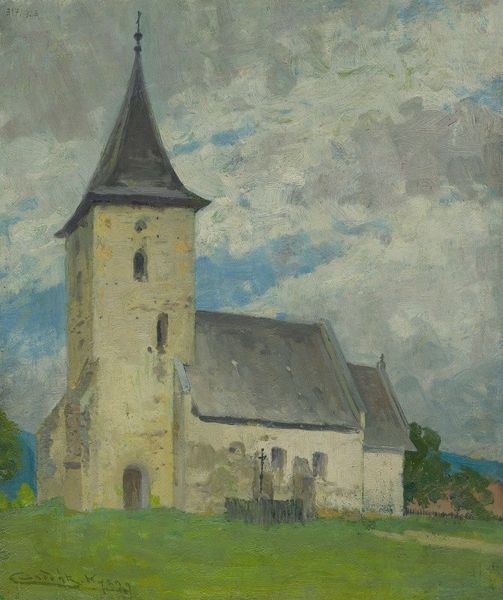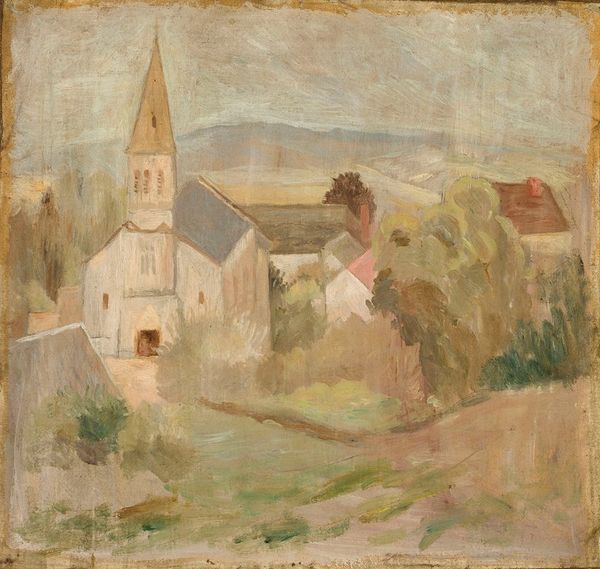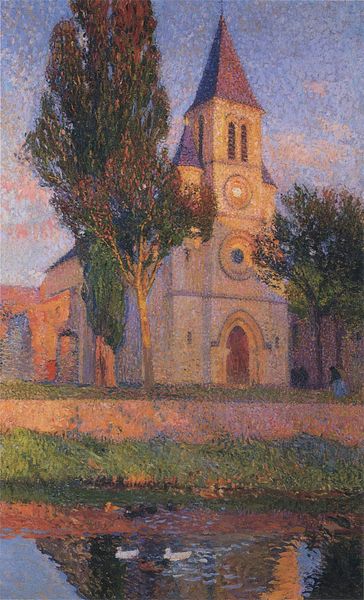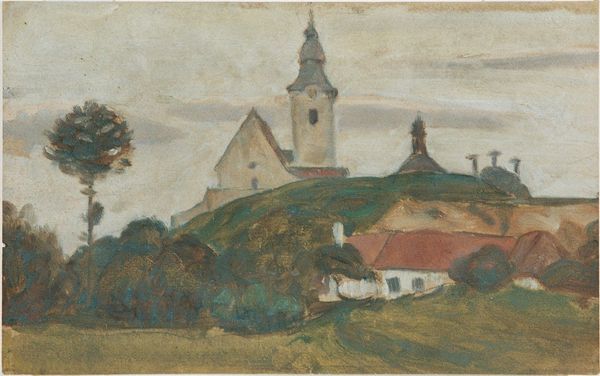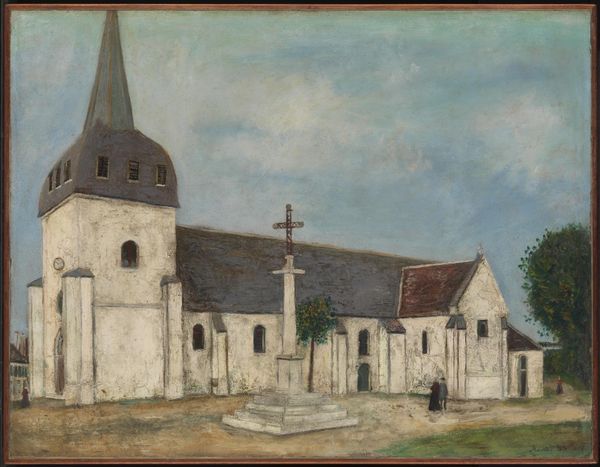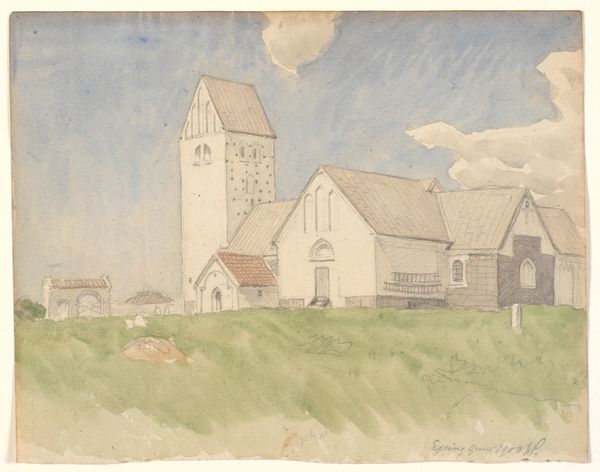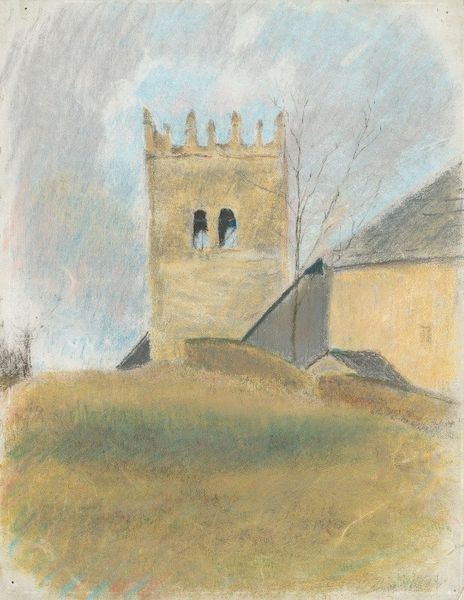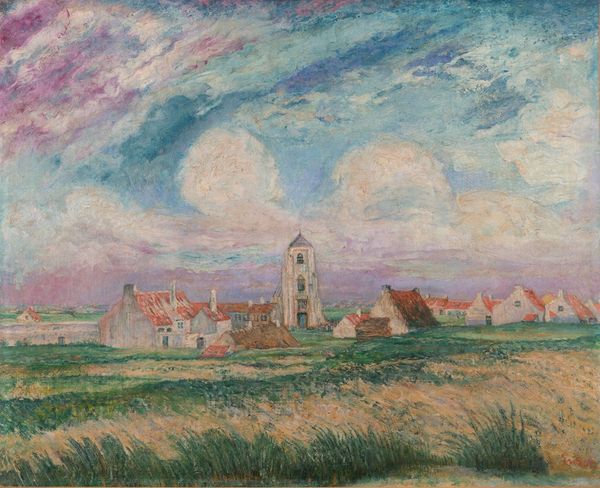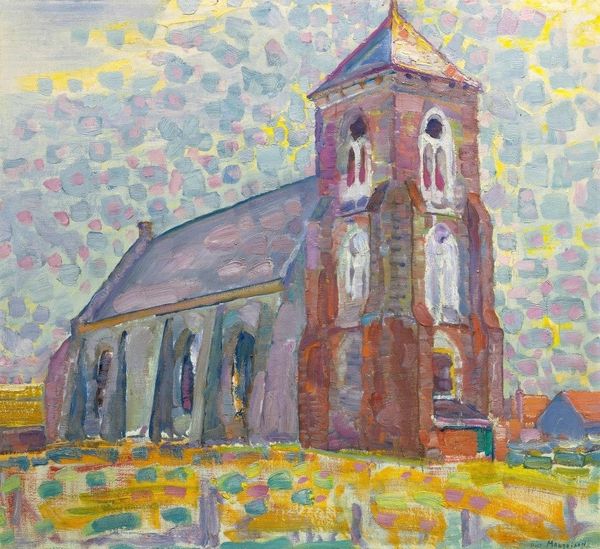
Copyright: Public Domain: Artvee
Editor: This is Ľudovít Ķordák’s "Church in Svinica," painted sometime between 1912 and 1920 using oil and watercolor. The painting feels incredibly still, like a memory fading into the landscape. What cultural echoes do you find resonating within this piece? Curator: The church is not merely a building but a repository of collective memory. Churches, as physical structures, hold centuries of community hopes, fears, and spiritual aspirations. The almost ethereal rendering softens its physical presence and turns it into a symbolic vessel. Does the angle remind you of anything? Editor: I suppose the composition—the church sitting atop a small hill—gives it a sense of quiet dignity and elevation, almost like a beacon. Are you suggesting it serves as a psychological point of focus? Curator: Precisely! Its looming presence speaks to the church's function as the central point of a community’s spiritual and cultural life. The graveyard in the foreground also serves as a visual reminder of the cycle of life and death—common visual metaphors for this era. Editor: The impressionistic style adds a layer of emotional depth. It's not just a church, but a feeling of church. Curator: Indeed. Notice the colours. Soft greens and blues convey a sense of tranquility. The blending creates a feeling of continuity between nature, building and sky, so you feel like it grows out of the landscape itself, rather than imposing upon it. The artist seems to be searching for ways to soften human impact and merge the built with the natural environment. Editor: Seeing the church as this merging of building, culture, and nature has completely shifted my perspective. Curator: Mine, too! It's a testament to how images are imbued with deeper meanings over time, constantly speaking to the culture from which they arose.
Comments
No comments
Be the first to comment and join the conversation on the ultimate creative platform.
